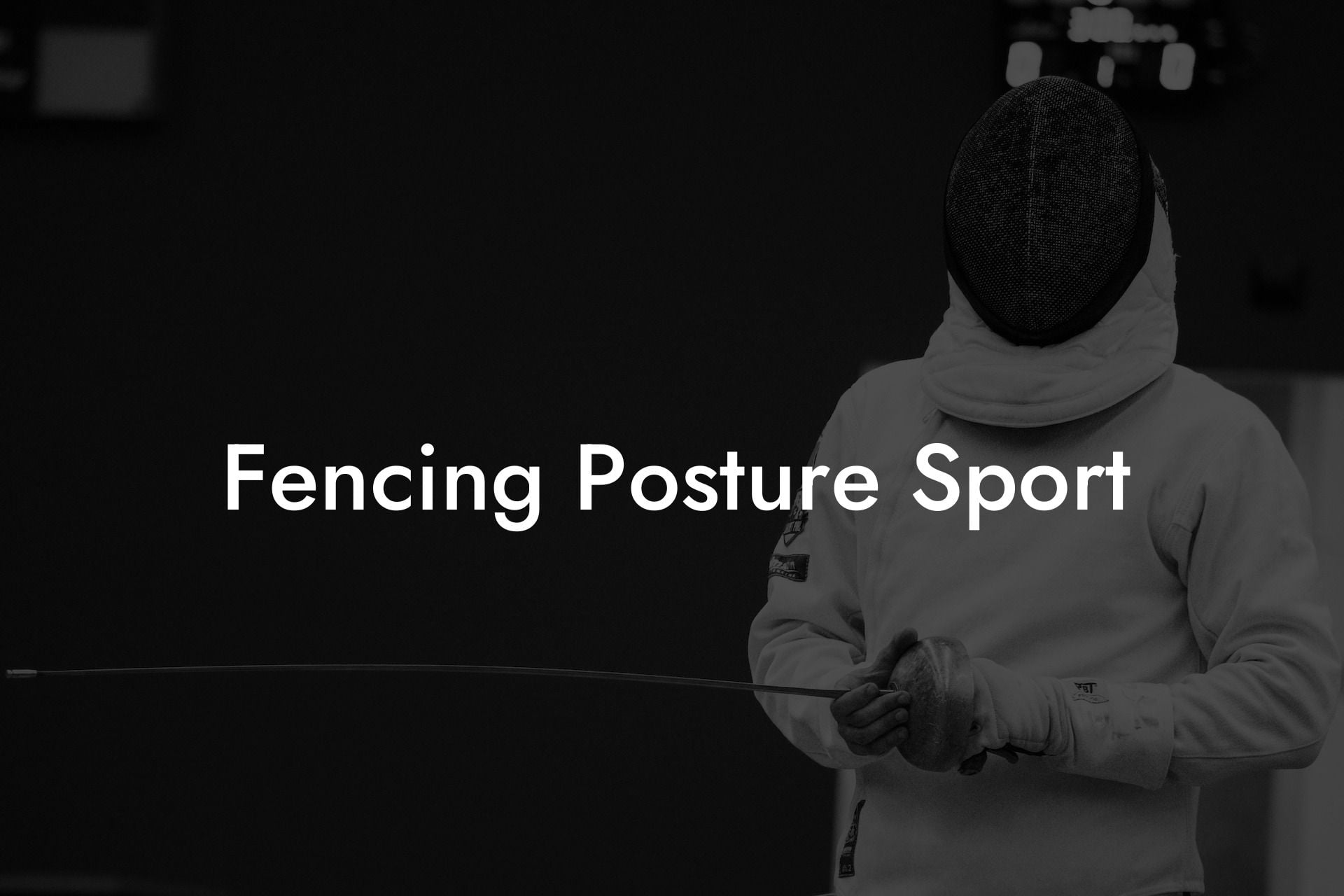Discover the world of fencing and its unique posture requirements within the sport. From balance and stability to agility and precision, we'll explore why having a solid fencing posture is essential for success.
Fencing Posture Sport Table of Contents
Importance of proper posture in fencing
Importance of proper posture in fencing
Having a good posture is essential in any sport, and fencing is no exception. It allows you to maintain balance, stability, precision, and speed throughout your movements. In fencing, a proper posture ensures that your weight distribution is correct, allowing you to wield your weapon effectively and execute the varied techniques and tactics involved in the sport.
The components of fencing posture
-
En Garde
This is the basic fencing stance, and it serves as the foundation for all movements. The En Garde stance begins with your feet shoulder-width apart and your dominant foot positioned forward, perpendicular to the rear foot. Your weight should be evenly distributed between your legs, with your knees slightly bent. This stance allows for both stability and mobility, a crucial combination in fencing.
-
Torso alignment
In fencing, it's important to keep your torso erect and your shoulders squared. This alignment allows you to maintain proper balance and control while executing your movements. However, be sure to keep your core slightly engaged and be mindful of not leaning too far back or forward.
-
Hand and arm positions
Your weapon hand should be extended straight out in front of you, with your arm at a slight downward angle. Your weapon should create a straight line with your arm, pointing towards your opponent. Furthermore, your non-weapon hand should be held to your side and slightly behind you, acting as a counterbalance to your weapon hand's movements.
-
Distribution of weight
Your weight distribution should be fairly even between your legs, allowing you to move quickly and adjust as needed during a bout. By keeping your weight slightly towards the balls of your feet, you'll be able to easily execute lunges, retreats, and other footwork maneuvers without compromising your balance.
Maintaining proper posture during movement
As you move during a bout, it's important to maintain your posture, ensuring that your stability and balance remain intact. Smooth and controlled footwork is key to maintaining a solid fencing posture. Be mindful of making large or dramatic motions that may compromise your balance or control, as these can easily lead to mistakes and leave you vulnerable to your opponent's attacks.
Fencing Posture Sport Example:
Imagine two fencers facing each other in a bout, both with solid postures. As their weapons engage and they begin to move, each fencer must maintain their En Garde stance, even distribution of weight, and overall posture. This allows them to execute precision attacks, retreats, and parries with controlled footwork. If one fencer's posture slips, they may overextend their attack or lose their footing during a retreat, leaving them vulnerable to a counterattack from their opponent. Proper posture and solid foundation make all the difference in a successful bout.
Understanding and applying proper fencing posture is integral in becoming a skilled fencer. It is the foundation upon which all your techniques and maneuvers rely. By mastering this aspect of the sport, you'll be better equipped to succeed in competition and enjoy the art of fencing. We hope this guide has shed some light on the importance of posture within the sport of fencing. Please feel free to share this article with fellow fencing enthusiasts, and be sure to visit Anchorage Fencing Club for additional tips and insights into the world of fencing!













